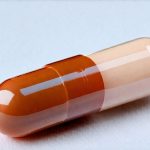The management of atrophic genitourinary syndrome (GUS), often associated with menopause, presents ongoing challenges for healthcare providers and patients alike. Traditionally, systemic hormone therapy has been the mainstay treatment, but it carries potential risks and isn’t always suitable for everyone. This has spurred significant research into localized estrogen therapies, aiming to deliver hormones directly where they are needed – the vaginal tissues – minimizing systemic absorption and its associated concerns. For decades, vaginal creams, rings, and tablets have served this purpose, yet patient adherence can be problematic due to discomfort or inconvenience. More recently, a novel approach utilizing topical estrogen bladder gels with barrier-layer release technology has emerged as a promising alternative, offering improved delivery and potentially enhanced compliance.
This new methodology isn’t merely about applying estrogen locally; it’s about how that local application is achieved. The core innovation lies in the incorporation of a barrier layer within the gel formulation. This layer functions to control the rate at which estrogen is released into the vaginal tissues, prolonging its effect and reducing the frequency of application needed. Furthermore, this technology seeks to address some of the limitations of earlier localized therapies by improving patient comfort and minimizing potential side effects related to systemic absorption. Understanding the science behind these gels, their clinical applications, and ongoing research will be crucial for healthcare professionals seeking to provide comprehensive care for women experiencing GUS.
Topical Estrogen Bladder Gels: Mechanism & Formulation
The concept behind topical estrogen bladder gels with barrier-layer release is rooted in pharmacokinetic principles – specifically, optimizing drug delivery to maximize efficacy while minimizing adverse effects. Traditional vaginal estrogen formulations often exhibit a burst release profile, meaning the initial dose delivered is high but quickly diminishes. This can necessitate frequent applications and may increase the risk of systemic absorption. The barrier layer technology aims to overcome these shortcomings by creating a sustained-release system. – The gel itself contains a low dose of estradiol, typically 10 mcg, which is considered safe for localized application. – A key component is the barrier layer, often composed of polymers like carbopol or other biocompatible materials. This layer surrounds microscopic droplets of estrogen within the gel matrix. – As the gel is applied vaginally and interacts with the natural moisture and temperature of the tissues, the barrier layer gradually degrades, releasing the estradiol in a controlled manner over an extended period (typically several days).
This controlled release isn’t just about prolonging the effect; it’s also about optimizing tissue penetration. The slower release allows for greater absorption into the vaginal epithelium and underlying bladder tissues, where estrogen receptors are present. This targeted delivery reduces the amount of estrogen entering systemic circulation, leading to lower levels in the bloodstream and minimizing potential side effects such as breast tenderness or uterine bleeding. The formulation is designed to be comfortable and easy to use, often resembling a lotion or cream-like consistency. Importantly, these gels are specifically designed for intravesical application – meaning they’re instilled directly into the bladder via a small catheter—rather than being applied vaginally like traditional creams. This direct delivery maximizes estrogen contact with the bladder lining, addressing urinary symptoms associated with GUS.
The development of these gels represents a significant advancement in localized hormone therapy. It’s not just about using estrogen; it’s about utilizing advanced materials science to deliver it more effectively and safely. Researchers continue to refine barrier layer compositions and gel formulations to further optimize release profiles, enhance tissue penetration, and improve patient acceptability.
Clinical Applications & Evidence
The primary clinical application for these topical estrogen bladder gels is the treatment of urinary symptoms associated with atrophic genitourinary syndrome. GUS often manifests as urgency, frequency, dysuria (painful urination), and incontinence. These symptoms significantly impact quality of life for many postmenopausal women. While traditional treatments include behavioral therapies and medications like anticholinergics, these don’t address the underlying physiological cause – estrogen deficiency. Estrogen plays a crucial role in maintaining the health and integrity of the bladder lining, including its urothelium and blood vessels. As estrogen levels decline during menopause, these tissues become thinner and more fragile, leading to increased sensitivity and susceptibility to irritation.
Clinical trials have demonstrated that topical estrogen bladder gels can significantly improve urinary symptoms in women with GUS. Studies have shown reductions in urgency, frequency, and dysuria, as well as improvements in overall quality of life. Furthermore, the low systemic absorption associated with these gels makes them a viable option for women who are hesitant to use systemic hormone therapy or those with contraindications to it. – One study published in The Journal of Urology demonstrated that patients treated with the gel experienced statistically significant improvement in urinary frequency and urgency compared to placebo. – Another trial found that the majority of participants reported improved bladder control and reduced pain during urination after several weeks of treatment. The sustained-release mechanism seems to be key, providing consistent estrogen levels over time and avoiding the “peaks and valleys” associated with other formulations.
It’s important to note that while promising, research into these gels is still evolving. Long-term studies are needed to fully assess their efficacy and safety profile. However, current evidence suggests they offer a valuable alternative for women seeking relief from urinary symptoms related to GUS, particularly those who prefer localized therapy with minimal systemic exposure.
Patient Selection & Administration
Identifying appropriate candidates for topical estrogen bladder gels is crucial for successful treatment. Generally, postmenopausal women experiencing urinary symptoms suggestive of GUS are considered potential candidates. A thorough medical history and physical examination should be performed to rule out other causes of urinary symptoms, such as urinary tract infections or overactive bladder syndrome. – Women with a history of breast cancer, uterine cancer, or unexplained vaginal bleeding may not be suitable candidates. – Patients who have had a stroke or blood clot also require careful evaluation before initiating treatment.
The administration process is relatively straightforward but requires proper training and adherence to guidelines. 1. The gel is typically prescribed in pre-filled applicators for ease of use. 2. Patients are instructed on how to insert the applicator into the bladder via the urethra, usually at bedtime. 3. The entire contents of the applicator are instilled into the bladder. 4. Patients are advised to remain lying down for a short period (15-30 minutes) after administration to allow for optimal absorption. It’s crucial that patients receive clear and comprehensive instructions on proper technique to ensure effective delivery and minimize the risk of complications. Healthcare providers should emphasize the importance of adherence to the prescribed dosing schedule, which is typically once or twice weekly.
Safety Profile & Potential Side Effects
The safety profile of topical estrogen bladder gels appears favorable based on current evidence. As mentioned earlier, the low systemic absorption minimizes the risk of estrogen-related side effects. However, some localized side effects have been reported in clinical trials. – Common side effects include mild vaginal discomfort or irritation, urinary frequency (which typically decreases over time), and occasional spotting. These side effects are generally mild and transient. – More serious side effects, such as allergic reactions or significant bleeding, are rare.
Long-term safety data is still being collected, but initial results suggest that these gels do not significantly increase the risk of cardiovascular events or breast cancer compared to other forms of localized estrogen therapy. Regular monitoring for any adverse effects is recommended, and patients should be instructed to report any concerning symptoms to their healthcare provider. Importantly, it’s essential to counsel patients about the potential benefits and risks of treatment, allowing them to make informed decisions about their care. The ongoing collection of real-world data will further refine our understanding of these gels’ long-term safety profile.
Future Directions & Research
The field of topical estrogen bladder gels with barrier-layer release is dynamic, with ongoing research focused on optimizing formulations and expanding clinical applications. Researchers are exploring different barrier layer materials to fine-tune the release profiles and enhance tissue penetration. – One area of interest is the development of biodegradable barrier layers that completely dissolve over time, leaving no residual material in the vagina. – Another avenue of investigation is the incorporation of other therapeutic agents into the gel formulation, such as hyaluronic acid or antioxidants, to further improve bladder health.
Future clinical trials will likely focus on evaluating the efficacy of these gels in specific subpopulations of women with GUS, such as those with refractory urinary symptoms or those who have failed previous treatments. Additionally, research is needed to compare the effectiveness and cost-effectiveness of topical estrogen bladder gels to other localized and systemic hormone therapies. The ultimate goal is to develop a personalized approach to GUS treatment, tailoring therapy to individual patient needs and preferences. This innovative technology holds considerable promise for improving the lives of women experiencing urinary symptoms related to menopause, offering a safe and effective alternative to traditional treatments.





















